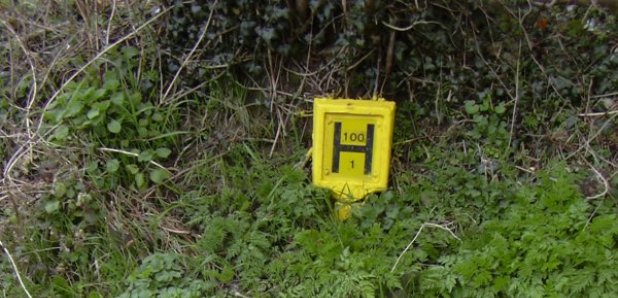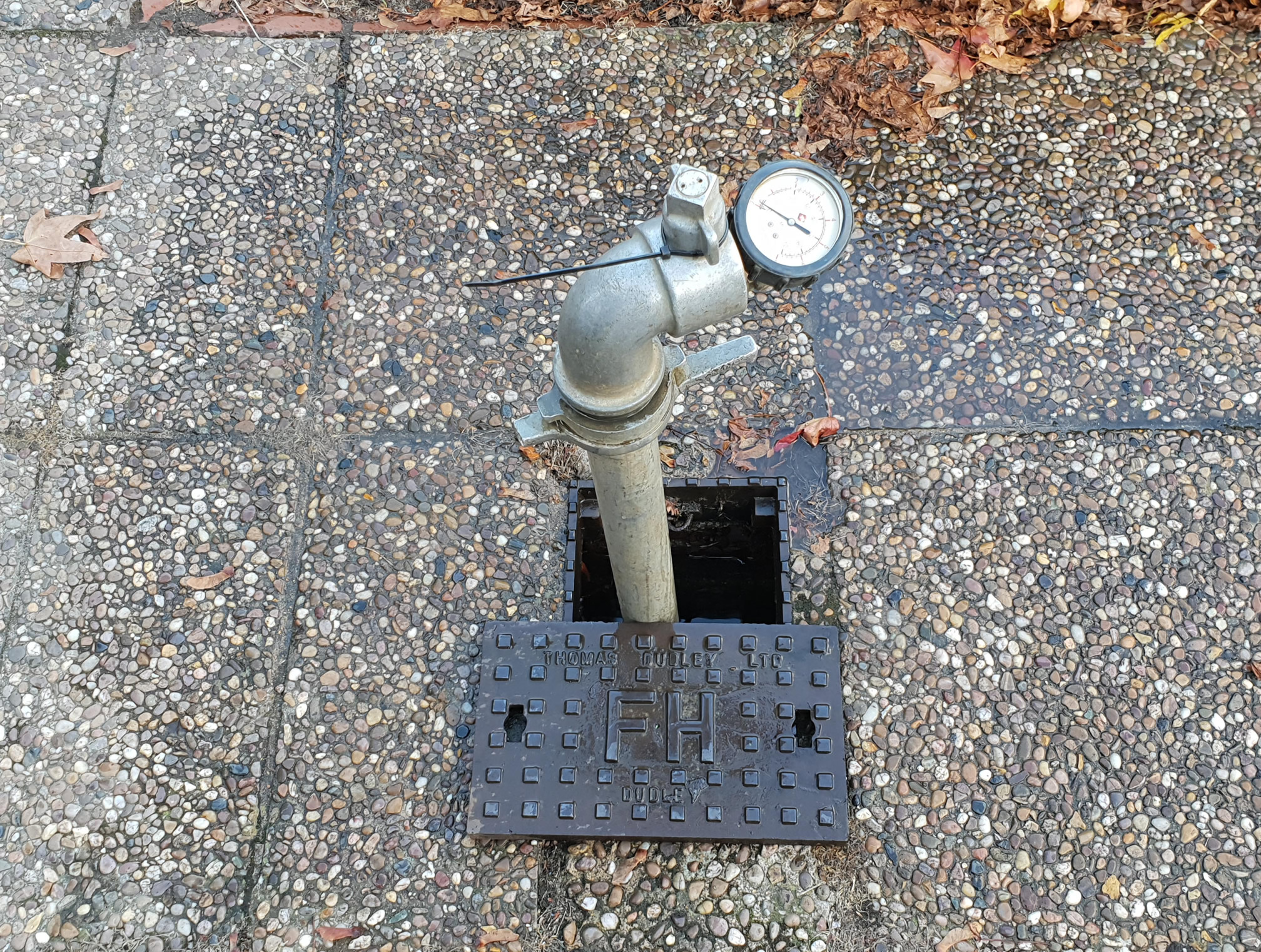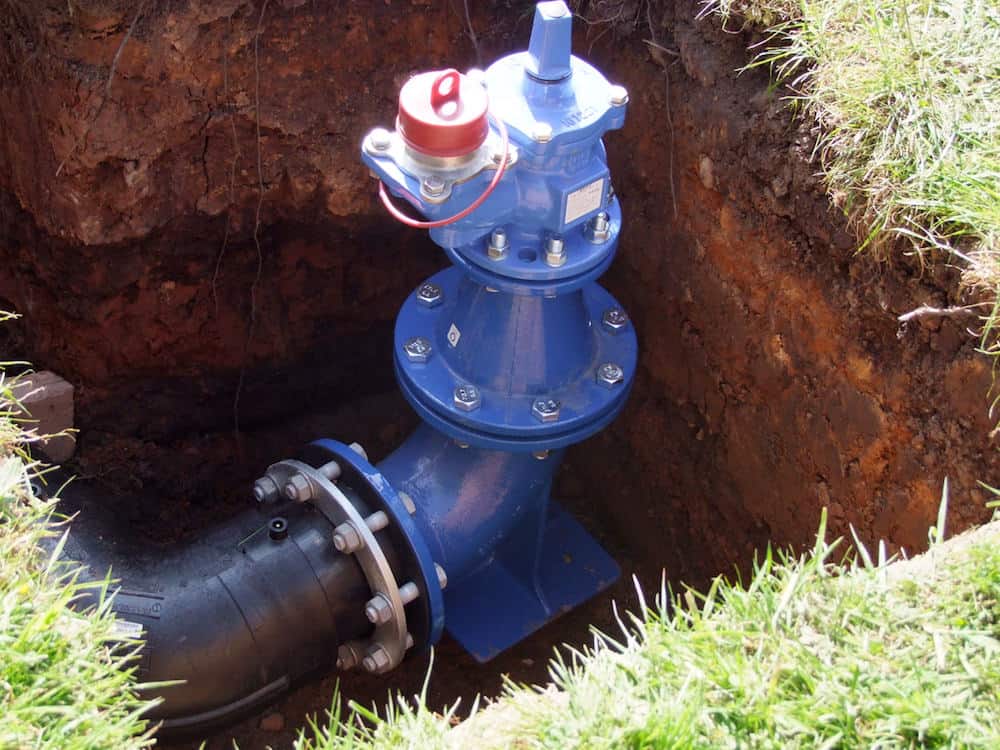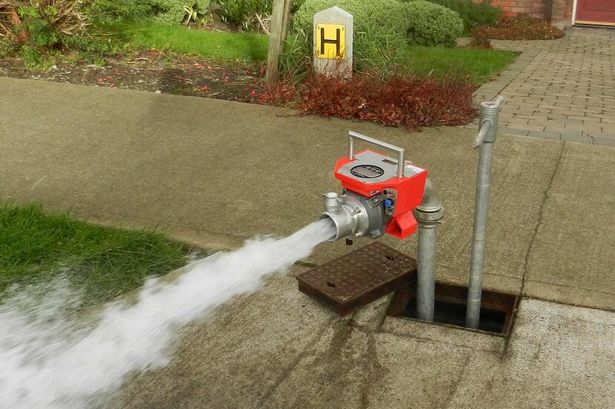If you have a private fire hydrant installed on your property, it is a legal requirement to have it regularly tested. Regular servicing & maintenance of your fire hydrant is not just a nice thing to have, it’s a requirement to comply with BS9990:2015. Failure of fire hydrants to perform when required could mean devastating consequences in the event of a fire.
With public liability, professional indemnity & failure to function insurance
Same great service for blue chips or sole traders
No ‘technicians’ – qualified service engineers only
Testing arranged to cause minimum disruption
Call us today on 01332 460 850 or Get a Quote online
What is a fire hydrant and do I have one?
A fire hydrant is an outlet controlled by a valve which allows access to high-pressure water in a water main pipeline. They are usually located beneath the ground, in a chamber below the surface of a road or path and are an important safety feature. Their primary purpose is to assist firefighters by allowing them to ‘plumb into’ a continuous supply of water instead of having to rely only on the water contained in their fire engines.
Fire hydrants are located by using a yellow sign with a black H on them like in the picture. The sign can be mounted on a concrete post, round metal pole or fixed to a wall. The top number refers to the size of the pipeline, the bottom number tells us the distance that the chamber is located from the sign. Modern metric signs state the pipe in millimetres and the distance in metres, older signs use imperial measurements of inches (pipe) and feet (chamber distance). The chamber is located below a metal access lid, which is often painted yellow to make it more visible. If you have noticed these on your site, you have private fire hydrants and they are your responsibility to test.
They are commonly found on sites that span a large area where it would not be feasible for the fire & rescue service to run hoses back to the main road. This could be a school, industrial estate, distribution centre, hospital, block of flats or apartments.
Quick Quote
Why do I need to perform fire hydrant testing?
Aside from the legal requirement to annually test under BS9990:2015, testing is important to ensure correct operation of the fire hydrant. Mechanical parts may seize if not operated on a regular basis, valves can start to leak as they age meaning that the full pressure and flow rate is not being achieved and chambers, being underground, can fill with silt and runoff groundwater impairing the operation of the hydrant.
Just one of these factors could be enough to stop the hydrant working when you need it most. A complete failure of the hydrant could mean a costly shutdown and replacement.
How often does my fire hydrant need servicing?
The British Standard for Fire detection & alarm systems, BS9990:2015 states that testing should be carried out annually. Depending on the age & condition of the valve, we may recommend remedial works such as cycling (opening & closing of the valve, to prevent seizure) on a more regular basis. We're happy to show your facilities team how to do this safely.
What tests get carried out?
There is a range of tests that get carried out on each hydrant, both visual and functional.
Above ground
The above ground tests involve recording the location of the valve, ensuring that the signage is present and accurate, that the surface surrounding the hydrant cover is sound.
Below ground
Below ground, we perform visual inspections inside the chamber. We check it's dry, free from silt and groundwater, that the valve packing is in good condition and doesn't indicate a leak and that the hydrant is not damaged in any way.
Physical tests
The hydrant is now put through its paces! A series of pressure and flow tests are carried out with the use of specially designed and calibrated meters. Our state of the art ultrasonic flowmeters can measure flows of up to 3000 litres per minute.
Why should I chose GetTesting to test my fire hydrants?
As a specialist testing company, our focus is on offering detailed, comprehensive testing that meets current legislation. Our hydrant test engineers have years of experience in the water utilities industry and offer expert knowledge on valves & water pipelines. Our cloud based reporting system will ensure you always have access to your certificates should you lose one & we can offer a wide range of remedial works should your hydrants have an issue.
Is your Fire hydrant testing due? Get in touch for a quotation or to arrange a site visit
Call us today on 01332 460 850 or Get a Quote online
[1] Fire Hydrant Servicing Intervals - BS9990:2015




